Browse Primary Sources
Locate primary sources, including images, objects, media, and texts. Annotations by scholars contextualize sources.
Women and Stalinism: Newspaper, Women’s Work
The increased presence of women in the workforce as a result of industrialization and other aspects of modernization during the 1930s was documented in government publications. While the numbers themselves cannot be independently verified, the more important analytical question involves asking about the explicit claims and underlying issues in these sources.

Women and Stalinism: Quantitative Evidence, Women's Education
The increased presence of women in the workforce as a result of industrialization and other aspects of modernization during the 1930s was documented in government publications. While the numbers themselves cannot be independently verified, the more important analytical question involves asking about the explicit claims and underlying issues in these sources.

Women and Stalinism: Quantitative Evidence, Women's Employment
The increased presence of women in the workforce as a result of industrialization and other aspects of modernization during the 1930s was documented in government publications. While the numbers themselves cannot be independently verified, the more important analytical question involves asking about the explicit claims and underlying issues in these sources.
Women and Stalinism: Newspaper, Women’s Roles
Articles and images published in Soviet newspapers on March 8, International Communist Woman’s Day, provide the most obvious examples of how women were used as symbols in a propaganda campaign. These texts and images were clearly intended to convey a certain message about the changing role of women in the Soviet system.
Women and Stalinism: Newspaper, Women's Equality
Articles and images published in Soviet newspapers on March 8, International Communist Woman’s Day, provide the most obvious examples of how women were used as symbols in a propaganda campaign. These texts and images were clearly intended to convey a certain message about the changing role of women in the Soviet system.
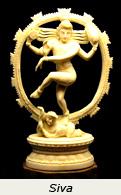
Bhakti Poets: Poem, Akkamahadevi 2
Bhakti poets—who were in some cases lower-caste Hindu women—and their audiences drew emotional sustenance from these verses, which expressed a pure devotion to Hindu deities.
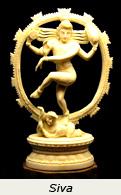
Bhakti Poets: Poem, Akkamahadevi
Bhakti poets—who were in some cases lower-caste Hindu women—and their audiences drew emotional sustenance from these verses, which expressed a pure devotion to Hindu deities.
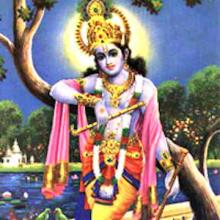
Bhakti Poets: Poem, Mirabai 4
Bhakti poets—who were in some cases lower-caste Hindu women—and their audiences drew emotional sustenance from these verses, which expressed a pure devotion to Hindu deities.
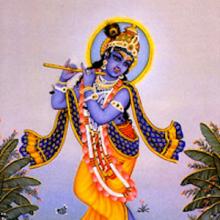
Bhakti Poets: Poem, Mirabai 3
Bhakti poets—who were in some cases lower-caste Hindu women—and their audiences drew emotional sustenance from these verses, which expressed a pure devotion to Hindu deities.
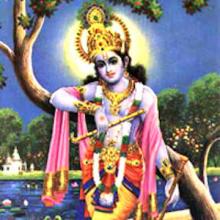
Bhakti Poets: Poem, Mirabai 2
Bhakti poets—who were in some cases lower-caste Hindu women—and their audiences drew emotional sustenance from these verses, which expressed a pure devotion to Hindu deities.
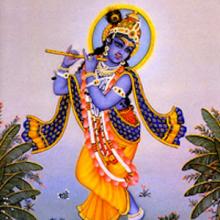
Bhakti Poets: Poem, Mirabai
Bhakti poets—who were in some cases lower-caste Hindu women—and their audiences drew emotional sustenance from these verses, which expressed a pure devotion to Hindu deities.

Bhakti Poets: Poem, Janabai
Bhakti poets—who were in some cases lower-caste Hindu women—and their audiences drew emotional sustenance from these verses, which expressed a pure devotion to Hindu deities.
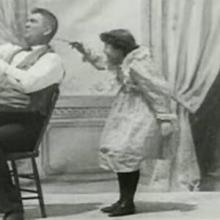
Little Mischief
This 25-second "kinetoscope" shot on Vitagraph's roof-top studio in New York City by Thomas A. Edison Inc. in 1898/1899, sheds light on shifting notions of girlhood at the turn of the 20th century.

Swords and Hearts
In the years before D. W. Griffith made The Birth of a Nation (1915), the epic film that debuted on the 50th anniversary of the Civil War, he produced 11 Civil War films in which he mastered the art of filmmaking and storytelling. These have surprising relevance to the history of girls.
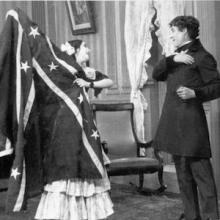
The House with Closed Shutters
In the years before D. W. Griffith made The Birth of a Nation (1915), the epic film that debuted on the 50th anniversary of the Civil War, he produced 11 Civil War films in which he mastered the art of filmmaking and storytelling. These have surprising relevance to the history of girls.
The Revolt from An Historical Account of the Black Empire of Hayti
Rainsford’s detailed contemporary account of the revolt emphasizes the strenuous yet ultimately unsuccessful mobilization of colonial French resources.
Ogé’s Rebellion in An Historical Account of the Black Empire of Hayti
Rainsford’s sympathy for the revolt in Haiti did not seem to extend to the influence of ideas imported from revolutionary France, which appear to have been at the heart of Ogé’s rebellion.
Barnave, "Speech for the Colonial Committee of the National Assembly" (8 March 1790)
Here Antoine–Pierre Barnave, a well–connected and influential lawyer from Grenoble, represented those interests that wanted to hold onto France’s rich colonial possessions.
Letter from Monseron de l’Aunay to the Marquis de Condorcet, President of the Society of Friends of the Blacks (24 December 1789)
This letter appears in the Journal of Paris as part of a debate over a performance of a play by Olympe de Gouges, the noted feminist, that concerns the abolition of the slave trade. The letter is written by a deputy of the Chamber of Commerce of the port city of Nantes, which had close ties to the Caribbean economy.
A Divided Elite from An Historical Account of the Black Empire of Hayti
In this excerpt, Rainsford describes the divisive effects of the Declaration of Rights of the Blacks among the various racial/social groupings.